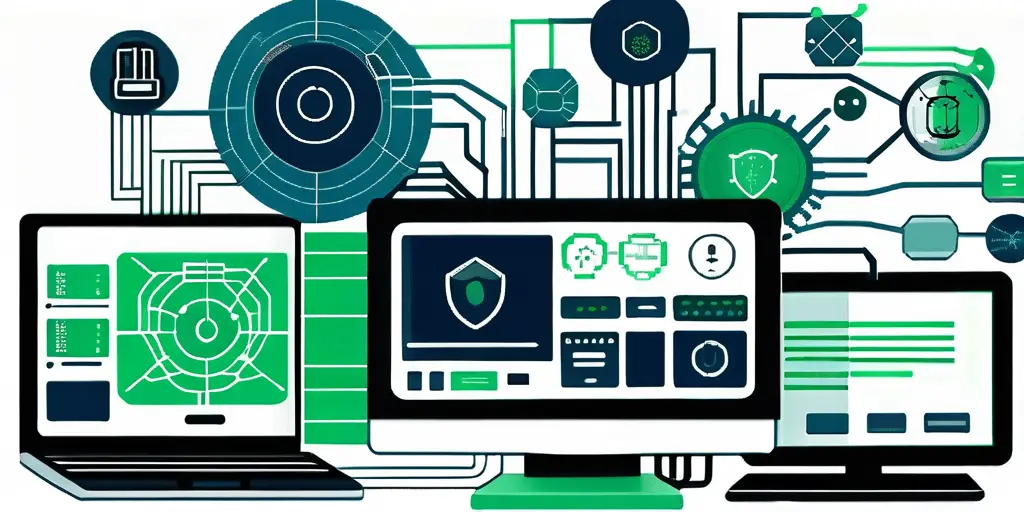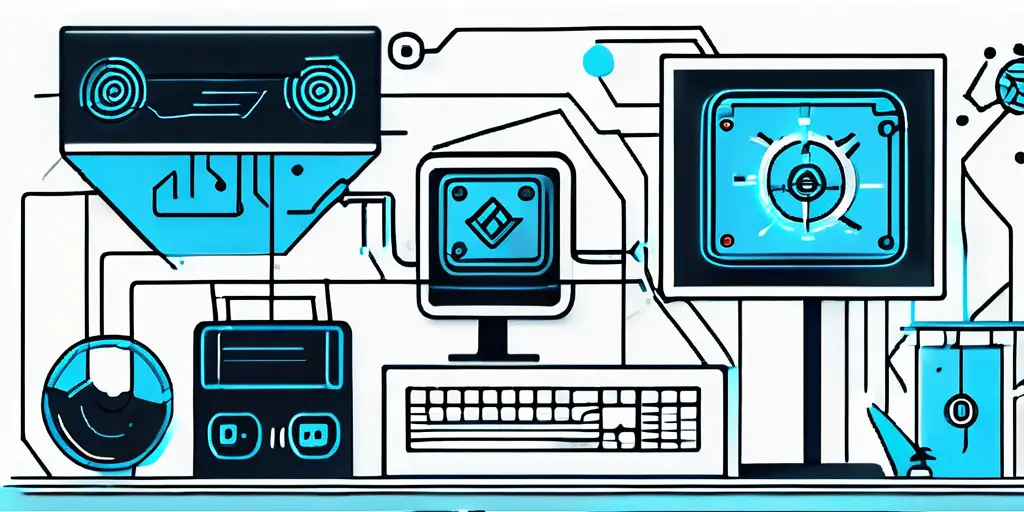Imagine you’re trying to break into a highly secure building. Maybe you want to see what’s inside or have a mischievous plan up your sleeve. Either way, you’ll soon realize that just trying once won’t be enough. You need to be persistent. In the world of hacking, persistence refers to the tenacity and determination to infiltrate a system and maintain control over it for as long as possible. It’s like the hacker’s version of never giving up.
Understanding the Concept of Persistence in Hacking
Before we delve into the nitty-gritty of persistence, let’s define precisely what it means in cybersecurity.
Defining Persistence in Cybersecurity
In cybersecurity, persistence refers to maintaining unauthorized access to a system without being detected or kicked out by the defenders. It’s like the elusive cat burglar who leaves no traces behind. The longer a hacker can maintain persistence, the better their chances of achieving their objectives.
One key aspect of persistence is the ability to blend in with regular network traffic and activities, making it challenging for cybersecurity professionals to spot anomalies. This requires a deep understanding of the target system’s architecture and behavior, allowing the hacker to navigate its defenses undetected.
The Role of Persistence in Successful Hacking
Now that we have a clear definition, let’s explore why persistence is essential to successful hacking operations.
Think about it this way: hacking is not a one-and-done affair. It’s a constant battle between cybersecurity professionals and the attackers. Persistence allows hackers to adapt, evolve, and stay one step ahead of their adversaries. It’s like a game of chess, where the hacker’s moves are carefully calculated, aiming to outsmart and outmaneuver the defenders.
Persistence is crucial for achieving long-term objectives, such as exfiltrating sensitive data, establishing backdoors for future access, or even causing widespread disruption. By maintaining a foothold in the target system, hackers can continue to explore, exploit, and escalate their privileges over time, maximizing the impact of their attacks.
The Techniques Used for Persistence in Hacking
So, how do hackers achieve persistence in their operations? Let’s take a closer look at some of the techniques they employ.

When it comes to achieving persistence in hacking, hackers delve into myriad sophisticated methods that allow them to maintain access to a compromised system over an extended period. One common approach is creating backdoors, essentially hidden entry points that provide hackers with a secret means of re-entering a system without detection. Additionally, hackers may opt to install rootkits, malicious software packages designed to grant unauthorized access while concealing their presence from regular security measures. These tactics mirror the concept of having a covert key to a building, enabling hackers to come and go as they please, all while remaining undetected.
Methods of Maintaining Access
Hackers employ various methods to maintain access to a compromised system. They might create backdoors or install rootkits to ensure they can get in and out without raising suspicion. It’s like having a hidden key to the building that only they know about.
In their quest for persistence, hackers leverage evasion techniques to evade detection and maintain their foothold within a system. Through the use of obfuscation techniques and anti-forensic tools, hackers can obscure their activities and cover their digital tracks, complicating the efforts of cybersecurity professionals to identify and eradicate their presence. This strategic evasion is akin to scattering breadcrumbs that lead security experts on a convoluted path, ultimately leading nowhere and leaving the hackers free to operate without interference.
Techniques for Evasion and Persistence
Aside from maintaining access, hackers also employ evasion techniques to remain undetected. They might use obfuscation or anti-forensic tools to conceal their tracks, making it harder for security experts to uncover their presence. It’s like leaving behind a trail of breadcrumbs that lead nowhere.
The Impact of Persistence on Cybersecurity
Now that we understand how persistence operates in hacking let’s explore its impact on cybersecurity as a whole.
When delving deeper into the realm of cybersecurity, the influence of persistence on the digital landscape becomes even more apparent. Beyond the technical aspects, the psychological impact of persistent threats cannot be underestimated. The constant looming presence of potential breaches can create a sense of unease and urgency within organizations, driving them to evaluate and fortify their defenses continuously.
How Persistence Affects Security Measures
Persistence challenges cybersecurity professionals by forcing them to adapt and update their defensive measures constantly. As hackers become more persistent, defenders must stay one step ahead, constantly innovating and enhancing their security protocols. It’s like a never-ending arms race between competing forces.
The evolving nature of persistent threats necessitates a multidimensional approach to cybersecurity. Beyond traditional firewalls and antivirus software, organizations are increasingly turning to advanced technologies such as artificial intelligence and machine learning to detect and mitigate persistent threats in real-time. This proactive stance is crucial in an environment where attackers are relentless in their pursuit of vulnerabilities.
The Consequences of Persistent Threats
Persistent threats carry significant consequences for individuals, organizations, and even nations. A successful persistent attack can result in unauthorized access to sensitive data, financial loss, reputational damage, and, in extreme cases, even the disruption of critical infrastructure. It’s like a relentless storm that can cause immense devastation.
The aftermath of a persistent cyberattack extends far beyond immediate financial losses. Restoring trust and credibility in the wake of a breach can be a long and arduous process, requiring transparent communication, robust security improvements, and sometimes even legal repercussions for the perpetrators. The ripple effects of persistent threats can reverberate throughout an organization for years to come, underscoring the critical importance of proactive cybersecurity measures.
Strategies for Detecting and Mitigating Persistent Threats
Given the severe impact of persistent threats, it’s crucial to develop strategies for detecting and mitigating them effectively.

When it comes to dealing with persistent threats in the cybersecurity realm, staying one step ahead of potential attackers is key. By understanding malicious actors’ various tactics and techniques, organizations can better prepare themselves to defend against such threats. This proactive approach involves continuous monitoring, threat intelligence gathering, and staying abreast of the latest cybersecurity trends and vulnerabilities.
Identifying Signs of Persistence in Hacking
One way to combat persistent threats is by identifying the signs that indicate their presence. Security experts look for unusual network traffic, abnormal user behavior, and unexpected system modifications. Recognizing these red flags allows defenders to take action and thwart the attacker’s persistence. It’s like finding footprints leading to the burglar’s hideout.
In the ever-evolving landscape of cyber threats, it’s essential to rely on traditional security measures and leverage advanced technologies such as artificial intelligence and machine learning. These cutting-edge tools can analyze vast amounts of data in real-time, enabling organizations to detect anomalies and potential indicators of compromise more effectively.
Best Practices for Mitigating Persistent Threats
In addition to detection, implementing best practices can help organizations mitigate the impact of persistent threats. Regularly updating software, using multi-factor authentication, and conducting thorough security audits are just a few vital measures. By doing so, defenders can make it harder for hackers to establish and maintain persistence. It’s like fortifying a building with multiple layers of security.
Fostering a culture of cybersecurity awareness among employees is paramount in the fight against persistent threats. Educating staff members about the importance of strong password management, phishing awareness, and social engineering tactics can reduce the risk of successful cyber attacks. After all, a well-informed workforce serves as an additional defense against persistent threats.
The Future of Persistence in Hacking
Finally, let’s peek into the crystal ball and see what the future holds for persistence in hacking.

Emerging Trends in Persistent Threats
As technology continues to advance, so do hackers’ techniques. We can expect to see more sophisticated methods of persistence emerging. From leveraging artificial intelligence to exploiting vulnerabilities in emerging technologies, the future of persistence poses new challenges for defenders. It’s like an ever-evolving puzzle that demands constant vigilance.
One emerging trend in persistent threats is the use of machine learning algorithms by hackers to automate and optimize their attacks. These algorithms can adapt and learn from previous attempts, making them more effective and harder to detect. As defenders race to keep up with these advancements, the cybersecurity battlefield becomes increasingly complex and dynamic.
The Evolution of Persistence Techniques in Hacking
Just as cybersecurity measures evolve, so do the persistence techniques used by hackers. Hackers adapt and refine their strategies as defenders develop new ways to detect and mitigate threats. It’s like a never-ending dance between two forces locked in an eternal struggle.
Another evolution in persistence techniques is the rise of “fileless” attacks, where malicious code is executed directly in memory without leaving a trace on the disk. This stealthy approach bypasses traditional security measures that focus on detecting file-based threats, posing a significant challenge for defenders. As hackers continue to innovate and experiment with new tactics, the cat-and-mouse game of cybersecurity escalates to new heights.
In conclusion, understanding and combating persistence in hacking is vital in today’s digital landscape. By acknowledging the importance of persistence, developing effective strategies to detect and mitigate threats, and staying vigilant against emerging trends, we can strive to protect our digital assets and maintain the security of the systems that drive our modern lives.
As the digital landscape evolves, so does the need for advanced cybersecurity measures to combat persistent threats. With its comprehensive expertise and proactive approach, Blue Goat Cyber stands ready to defend your business against the most sophisticated hacking techniques. Whether you’re concerned about medical device cybersecurity, need thorough penetration testing, or require adherence to HIPAA and FDA regulations, our Veteran-Owned team is equipped to provide the tailored solutions you need. Don’t let the persistence of cyber threats undermine your success. Contact us today for cybersecurity help and take the first step towards a secure and confident digital future with Blue Goat Cyber.


